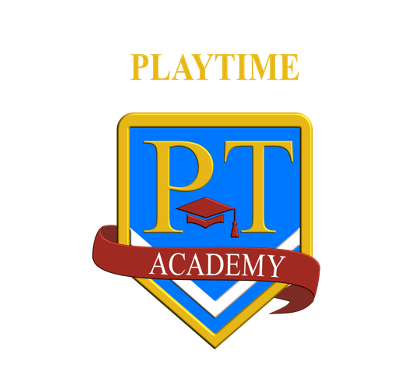What’s the Best Age to Start Child Care? 🤔
November 12, 2024

Let’s be real: deciding when to start child care feels like one of those big parenting decisions—right up there with choosing a name or figuring out when to introduce screen time. So, what’s the deal? Is there a “perfect age” to send your little one to child care? Spoiler alert: it depends. But don’t worry, I’ll break it down for you.
Infants (6 weeks to 12 months)
Toddlers (1 to 2 years)
Preschool Age (3 to 4 years)
And whenever that moment is for your family, we’ll be right here to support you through it!
Schedule a visit to learn more about our amazing Infant-Preschool programs.
Why Timing Matters ⏳
The “best” age for starting child care varies for every family. It depends on your kid’s needs, your situation, and honestly, your parents' intuition. But let’s look at a few key milestones to help you decide:Infants (6 weeks to 12 months)
- Pros : Many child care centers are equipped to care for infants with trained staff who know how to handle tiny humans. If you’re heading back to work after maternity or paternity leave, this can be a lifesaver.
- Cons : Some parents feel nervous about leaving their baby so young. Plus, early care can be pricey and harder to find.
Toddlers (1 to 2 years)
- Pros : At this age, kids start benefiting from structured social interactions. Child care can help with language development, sharing skills, and building independence.
- Cons : Separation anxiety might hit hard during this phase—for both of you. It can be tough to watch your toddler cling to your leg as you head out the door.
Preschool Age (3 to 4 years)
- Pros : By now, kids are little sponges, ready to soak up structured activities. Child care can prepare them for school routines, from sitting in a circle to following instructions and teach them essential skills to be Kindergarten ready.
- Cons : If you’ve stayed home this long, the transition might be a bigger adjustment—for them and for you.
So, When Should You Start?
Here’s the thing: there’s no “one-size-fits-all” answer. But here are some tips to guide you:- Consider Your Needs : Are you going back to work? Need a break to recharge? Is your child ready for structure, routine, and more social interaction? Your family’s unique needs should guide your choice.
- Visit and Observe : Don’t leave this to chance. Most childcare centers offer free tours where you can:
- See the facilities firsthand.
- Meet the teachers and staff.
- Observe how caregivers interact with kids.
- Pay attention to cleanliness, the overall organization, and how staff engage with the children—it’s a sneak peek into how they’ll treat your child if you choose them.
The Bottom Line
There’s no perfect age to start child care—just the right age for your family. Whether you jump in at 3 months, 3 years, or anywhere in between, you’re doing what works for you and your little one.And whenever that moment is for your family, we’ll be right here to support you through it!
Schedule a visit to learn more about our amazing Infant-Preschool programs.
Oh, and one last thing: give yourself some grace. You’re rocking this parent thing—even on the hard days.
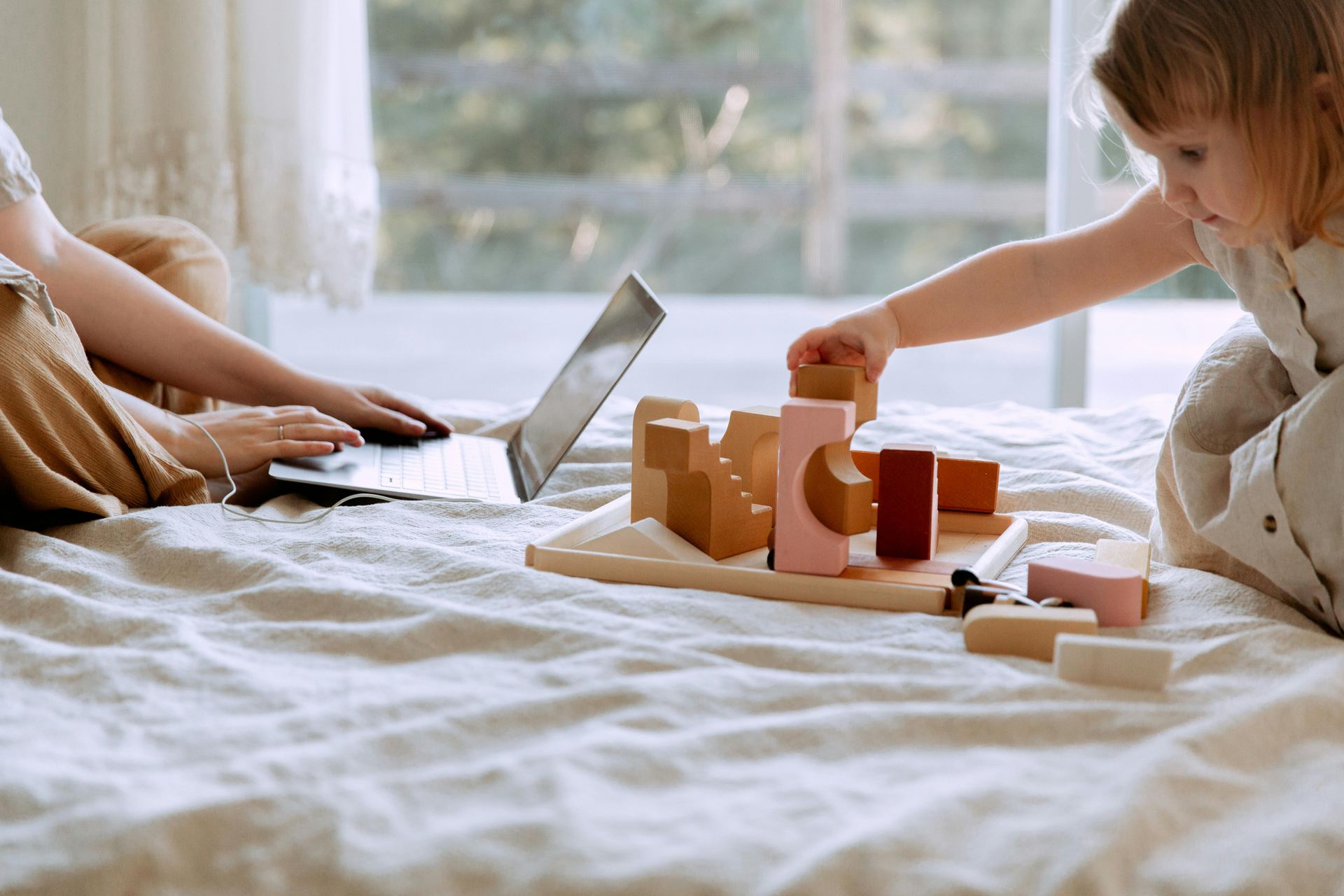
Early childhood education plays a vital role in shaping a child’s future. From laying the groundwork for cognitive development to fostering social and emotional growth, the experiences children have during their formative years can significantly influence their academic, personal, and professional outcomes later in life. At Playtime Academy, we understand that the early years are crucial for setting the stage for success, and we take pride in providing a nurturing environment where children can thrive. Why Early Childhood Education Matters Research shows that children who have access to high-quality early childhood education are more likely to experience success in school and beyond. Here’s why: Cognitive Development : The brain develops rapidly during the early years, and the learning experiences children have during this time lay the foundation for all future learning. Early childhood education programs provide opportunities for children to engage in activities that build essential cognitive skills such as problem-solving, critical thinking, and creativity. Social and Emotional Development : Preschool is one of the first places where children learn how to interact with their peers and develop social skills. Through activities such as group play and cooperative learning, children practice important skills like sharing, empathy, communication, and conflict resolution. Language Development : Early childhood education is a key factor in language acquisition. Children exposed to rich language environments, including storytelling, songs, and interactive conversations, develop a strong vocabulary and communication skills that serve as the foundation for literacy and academic success. Building Self-Esteem and Confidence : Positive early learning experiences boost children’s self-esteem and help them build confidence in their abilities. When children are given opportunities to succeed, make decisions, and overcome challenges, they develop a sense of autonomy and pride in their accomplishments. The Impact of Play-Based Learning At Playtime Academy, we embrace the power of play-based learning as a central approach in our curriculum. Play is more than just fun—it's a critical tool for learning. Through play, children explore, discover, and make sense of the world around them. Here’s how play-based learning supports early childhood development: Encourages Creativity and Imagination : When children engage in imaginative play, they learn to think creatively and use their imagination. Whether they’re building a castle out of blocks or pretending to be animals, play encourages innovation and creative thinking. Promotes Problem-Solving Skills : During play, children often encounter challenges that require them to think critically and find solutions. For example, when building with blocks, a child might need to figure out how to make their structure more stable or find a way to balance objects. These problem-solving experiences strengthen cognitive skills that are essential for academic success. Develops Fine and Gross Motor Skills : Play allows children to practice and refine their motor skills. Activities like running, jumping, and climbing promote physical development, while tasks such as drawing, cutting, and building with small objects improve fine motor coordination. Teaches Cooperation and Teamwork : In group play, children learn how to work together, negotiate, and compromise. These interactions help them develop social skills and a sense of teamwork, which are valuable not only in school but also in life. The Role of Teachers in Early Childhood Education At Playtime Academy, we believe that teachers play a crucial role in creating a positive, engaging learning environment. Our educators are trained to provide the support and guidance children need to grow and succeed. Here’s how our teachers make a difference: Building Strong Relationships : Teachers at Playtime Academy take the time to get to know each child and build strong, trusting relationships. This helps children feel safe and supported, which is essential for their emotional development and academic success. Creating a Stimulating Learning Environment : Our classrooms are designed to stimulate curiosity and promote active learning. From hands-on activities to interactive lessons, our teachers create environments where children can explore, experiment, and learn through play. Individualized Attention : Every child is unique, and our teachers are dedicated to providing individualized attention to ensure each child’s needs are met. Whether a child requires extra support in a particular area or thrives in a specific skill, our educators tailor their approach to maximize each child’s potential. Encouraging Independence : Teachers at Playtime Academy foster independence by providing children with opportunities to make choices, solve problems, and take on responsibilities. This builds confidence and self-reliance, empowering children to take ownership of their learning. Parent Involvement in Early Childhood Education Parents are a child’s first teachers, and their involvement in early childhood education is essential for a child’s success. At Playtime Academy, we value the partnership between parents and teachers. Here’s how parents can be actively involved in their child’s early education: Open Communication : Regular communication between parents and teachers helps ensure that children’s needs are being met both at home and in school. Parent-teacher conferences, newsletters, and daily updates provide valuable insights into a child’s progress and development. Supporting Learning at Home : Parents can extend the learning from school into the home environment by reading with their child, engaging in creative play, and encouraging curiosity. Small activities like counting objects, identifying colors, and singing songs can reinforce concepts learned in the classroom. Participating in School Activities : Parents are encouraged to attend school events, field trips, and volunteer opportunities. Active involvement in school activities helps build a strong sense of community and shows children that learning is valued both at home and at school. The Long-Term Benefits of Early Childhood Education The benefits of early childhood education extend far beyond the preschool years. Research has shown that children who attend high-quality early education programs are more likely to: Perform Better in School : Children who receive early education are more likely to excel academically, with improved literacy and numeracy skills compared to their peers who did not attend preschool. Develop Stronger Social Skills : Early childhood education helps children build essential social skills such as cooperation, conflict resolution, and communication, which are crucial for success in school and later in life. Experience Greater Career Success : Studies have shown that children who attend high-quality early childhood education programs are more likely to graduate from high school, pursue higher education, and enjoy career success. Have Better Health Outcomes : Early education programs that promote healthy habits and social-emotional development have long-term benefits for physical and mental health, including lower rates of obesity, mental health issues, and substance abuse. Learn how a strong start in early education and the development of emotional intelligence go hand in hand in shaping a child's future in our blogs on the importance of early childhood education and how emotional intelligence shapes early childhood development. Conclusion: Investing in the Future of Our Children Early childhood education is an investment in the future. By providing children with a solid foundation of cognitive, social, emotional, and physical development, we are setting them on the path to lifelong success. At Playtime Academy, we are committed to providing the highest quality early education, ensuring that every child has the tools they need to grow, learn, and thrive.
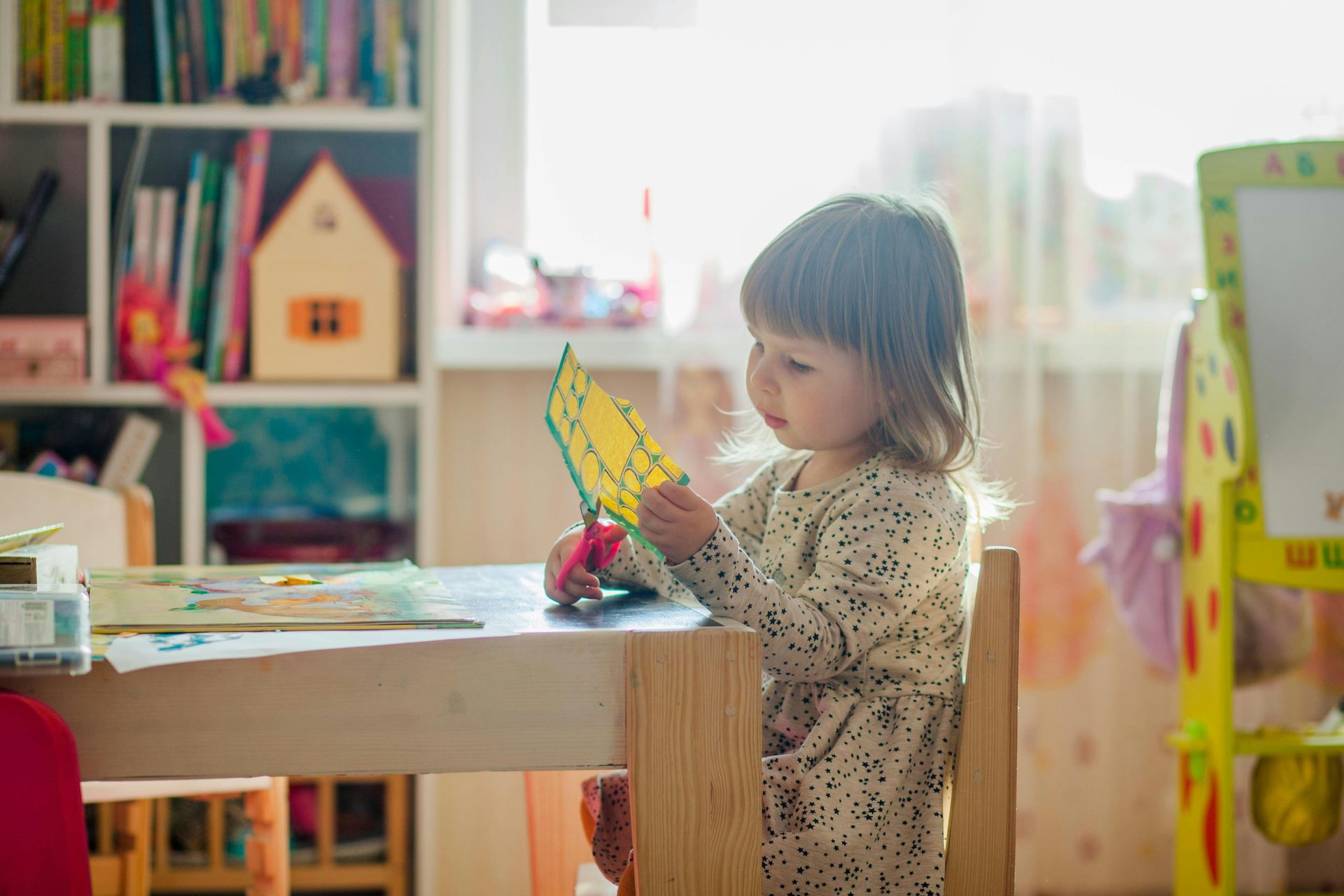
Emotional intelligence (EQ) is often discussed in older children and adults, but did you know that early childhood is when EQ first begins to develop? At Playtime Academy, we understand that nurturing emotional intelligence at an early age is crucial for building healthy relationships, promoting self-regulation, and fostering overall well-being. In this blog, we’ll dive into how early childhood educators and parents can foster emotional intelligence in young children and why it matters so much for their future success. What is Emotional Intelligence? Emotional intelligence refers to the ability to identify, understand, manage, and express emotions effectively. It’s more than just “feeling good” or “being happy” — it’s about recognizing how emotions affect thoughts and actions, managing those emotions, and using that awareness to build positive relationships. In young children, emotional intelligence includes: Self-awareness : Recognizing and naming emotions. Self-regulation : Managing emotions appropriately, especially in difficult situations. Empathy : Understanding and caring about the feelings of others. Social skills : Navigating relationships with peers and adults. Building emotional intelligence in early childhood sets the foundation for positive behavior, better problem-solving skills, and a lifelong ability to manage emotions effectively. The Role of Play in Developing Emotional Intelligence At Playtime Academy, we recognize that play is not just about fun—it's also about learning vital social and emotional skills. Here’s how different types of play foster emotional intelligence: Imaginative Play : Role-playing scenarios, such as playing “house” or pretending to be different animals, helps children step into the shoes of others and understand their feelings and perspectives. This builds empathy and social understanding. Cooperative Play : Games that require sharing, turn-taking, and teamwork teach children how to regulate their emotions, manage frustration, and cooperate with others. These interactions help build self-regulation skills and create a foundation for managing conflicts. Emotional Expression through Art and Music : Art and music are powerful tools for children to express their emotions. Whether it’s drawing pictures to represent their feelings or singing a song to reflect joy or sadness, creative activities give children a healthy outlet for emotional expression. Problem-Solving Play : Problem-solving activities like puzzles or building with blocks not only promote cognitive development but also encourage emotional growth. These activities teach patience, perseverance, and self-control—key elements of emotional intelligence. How Educators Promote Emotional Intelligence at Playtime Academy Our dedicated educators at Playtime Academy are intentional in creating a nurturing environment where children’s emotional development is prioritized. Here’s how we promote emotional intelligence in our classrooms: Modeling Positive Emotional Responses : Teachers actively model how to express emotions in a healthy, constructive manner. For example, when a child is upset, the teacher might say, “I see you’re feeling frustrated. Let’s take a deep breath together and talk about how we can solve this problem.” This helps children learn how to articulate their emotions and manage difficult feelings. Teaching Emotion Vocabulary : We help children identify and name their emotions by using picture charts, stories, and role-playing. The more children can label their feelings, the better equipped they are to manage them in the future. Encouraging Empathy : Through group activities and discussions, teachers encourage children to recognize how others feel. For instance, if a classmate is upset, teachers guide the children to express care and empathy, saying things like, “How can we help our friend feel better?” Guiding Social Interactions : Teachers are always present to guide social interactions, helping children navigate conflicts and teaching them effective communication and problem-solving skills. These skills are foundational for emotional intelligence and later social success. Building Self-Regulation in Young Children Self-regulation, one of the core components of emotional intelligence, is the ability to control one’s emotions and behavior in response to situations. While it can take time to develop, there are ways to support self-regulation in young children: Setting Clear Boundaries : Consistent routines and clear expectations help children feel secure and understand what is expected of them. When they know the limits, it’s easier for them to self-regulate. Using Calming Strategies : Teaching children calming techniques such as deep breathing, counting to ten, or using a sensory tool (like a stress ball) can help them manage overwhelming emotions. Providing Praise and Encouragement : When children successfully manage their emotions, it’s important to praise their efforts. Positive reinforcement helps build their confidence and encourages them to continue using self-regulation strategies. Role-Playing Difficult Scenarios : Teachers often use role-playing to practice self-regulation techniques. For example, they may model how to handle losing a game or dealing with frustration when building a tower that keeps falling down. This allows children to practice and reinforce positive behaviors. The Lifelong Benefits of Emotional Intelligence Fostering emotional intelligence in early childhood has far-reaching benefits that extend well beyond preschool. Children with strong emotional intelligence tend to: Develop Better Social Skills : By learning empathy, communication, and conflict resolution, children are better equipped to make and maintain friendships, work in teams, and navigate social situations throughout their lives. Experience Better Academic Success : Children with high emotional intelligence are better able to handle stress, stay motivated, and maintain focus, all of which contribute to academic achievement. Show Greater Mental Health Resilience : Developing emotional intelligence equips children to cope with challenges, setbacks, and emotional turmoil in healthier ways. This leads to lower rates of anxiety and depression as they grow older. Cultivate Stronger Relationships : Understanding their own emotions and those of others helps children build meaningful, supportive relationships with family, friends, and peers. How Parents Can Foster Emotional Intelligence at Home The foundation for emotional intelligence begins in the home. Parents can continue to support their children’s emotional development through: Encouraging Open Conversations : Make time to talk about feelings regularly. Ask open-ended questions such as, “How did that make you feel?” to encourage emotional expression. Using Emotion-Based Stories : Read books that highlight emotional experiences and how to deal with them. Stories about characters facing challenges help children recognize emotions and learn how to manage them. Modeling Emotional Expression : Show your children how to express emotions healthily. Saying things like, “I’m feeling frustrated, but I know I can work through this,” demonstrates that it’s okay to have emotions and that managing them is a skill we can develop. Creating a Calm Down Space : Set up a quiet area in your home where your child can retreat when feeling overwhelmed. This could include soft pillows, calming music, and soothing toys or books. Discover how hands-on exploration sparks curiosity and builds confidence in young learners in our blogs on from sensory bins to self-discovery and cultivating curiosity in preschoolers through open-ended exploration. Conclusion: Raising Emotionally Intelligent Children Emotional intelligence is one of the most valuable life skills a child can possess. At Playtime Academy, we prioritize emotional intelligence as part of a comprehensive approach to early childhood development. By fostering self-awareness, empathy, and self-regulation in young children, we help prepare them for a lifetime of success, resilience, and healthy relationships.
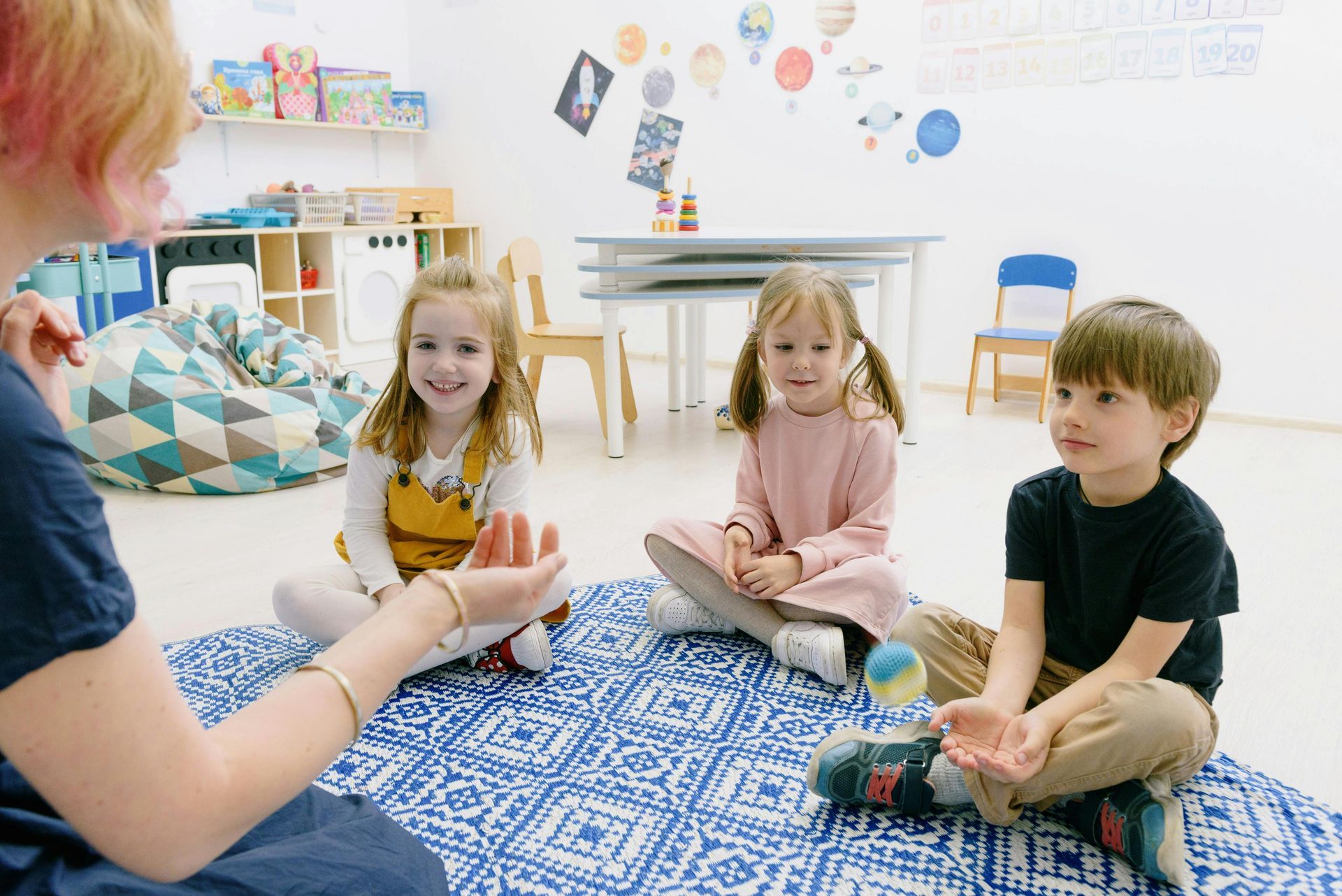
In a world filled with screens and structured schedules, hands-on learning is more important than ever—especially during the early years. At Playtime Academy, we believe in the power of tactile experiences. But it’s not just about touch—it’s about giving children the tools to explore, question, and understand their world from the ground up. In this blog, we’ll dive into how sensory-rich, exploratory learning helps children uncover not only academic concepts but also their own strengths, emotions, and confidence. The Science Behind Sensory Exploration Sensory play—think sand, water, slime, dough, textured toys—is not just “fun stuff.” It’s scientifically proven to support brain development in early learners. Sensory experiences activate neural pathways that form the foundation for learning, memory, and behavior regulation. In other words, when a child squishes playdough or watches colored rice swirl in a jar, their brain is doing complex work: integrating information, organizing stimuli, and forming meaningful associations. The Hidden Benefits of Hands-On Learning Let’s break down what makes tactile exploration so powerful—and why it’s central to our teaching philosophy at Playtime Academy: Fine Motor Development : Scooping, pouring, pinching, and stacking strengthen hand muscles and coordination, preparing children for writing, tying shoes, and buttoning jackets. Language Growth : Describing how things feel, smell, or move introduces rich vocabulary—“squishy,” “gritty,” “bumpy,” “oozy”—and improves expressive communication. Problem Solving & Focus : When children build structures or mix substances, they experiment, hypothesize, and observe outcomes. These early science skills foster logical thinking and perseverance. Emotional Regulation : Sensory play has a calming effect on the nervous system. It allows children to release anxiety, regulate emotions, and ground themselves in the present moment. Creative Confidence : Exploration without fixed outcomes builds confidence. There’s no “right way” to play with a sensory bin, and that freedom teaches kids to trust their ideas. Inside Our Classrooms: Exploration in Action 1. The Mud Kitchen Our outdoor mud kitchen is where nature meets imagination. Children mix soil, water, flowers, and leaves into “soups” and “potions.” They develop sequencing, categorization, and even early chemistry knowledge—while covered in giggles and mud. 2. Discovery Tables We rotate themed sensory bins—frozen dinosaurs in ice, kinetic sand with hidden treasures, cloud dough with measuring spoons. These aren’t just activities; they’re invitations to learn through curiosity and experimentation. 3. Water Walls & Bubble Stations Children explore cause-and-effect as they pour water into funnels, race it down pipes, and watch bubbles form and pop. It’s tactile physics with a dose of wonder. 4. Nature Walk Collections Leaves, stones, pinecones, and feathers collected from nature walks become part of our exploration tables. Children sort, compare, and create stories from their treasures, connecting learning to the world around them. Encouraging Self-Discovery Through Play Every time a child digs, stirs, or sculpts, they’re doing more than building a sandcastle—they’re learning about their preferences, problem-solving style, and confidence. Here’s how we nurture this: Freedom to Choose : Our learning stations are self-directed, allowing children to choose what interests them and explore it deeply. Celebrating Process Over Product : We don’t focus on end results—we focus on how children engage. This boosts intrinsic motivation and independence. Asking Open-Ended Questions : Teachers ask “What do you notice?” or “What do you think will happen if…” to spark critical thinking and dialogue. Reflective Conversations : After play, we invite children to share what they discovered or felt. These reflections build self-awareness and emotional vocabulary. How Parents Can Support Sensory Learning at Home You don’t need fancy materials to bring hands-on learning home. Here are some easy ideas: Create a rice bin with measuring cups and scoops. Let your child help with cooking—measuring, mixing, and kneading. Explore nature together: collect leaves, touch tree bark, splash in puddles. Freeze small toys in ice cubes and let them “rescue” them with warm water. Provide finger paint, shaving cream, or cloud dough for messy (but safe) fun. The key? Let them explore without worrying about mess or perfection. Sensory learning thrives when children are free to follow their instincts. Explore how open-ended exploration and hands-on experiences shape young minds in our blog posts on cultivating curiosity in preschoolers and the philosophy behind getting messy. Conclusion: Learning Starts in Their Hands At Playtime Academy, we see children as natural scientists, artists, and inventors. By engaging their senses, we empower them to make sense of their world—not through rote memorization, but through real experience. Sensory play is more than a strategy—it’s a celebration of how children learn best: hands first, heart open, and curiosity on full display.

At Playtime Academy, we believe that true learning begins with a question—not an answer. While learning letters and numbers is essential, it's the sense of curiosity behind a child's "Why?" that drives deep, lifelong learning. This post explores how we go beyond traditional academics to cultivate curiosity in preschoolers through open-ended exploration, wonder-filled environments, and intentional teaching strategies that leave room for the unexpected. The Problem with Prepackaged Learning Many early learning programs lean on structured, one-size-fits-all activities to keep children on track academically. But this often limits opportunities for original thought. When children are told exactly what to do, how to do it, and what the result should look like, there’s no room for discovery. At Playtime Academy, we flip the script: instead of giving answers, we create the conditions for children to ask their own questions and seek their own discoveries. The Power of Curiosity in Early Development Curiosity is not just cute—it’s cognitive gold. Research shows that curiosity activates the brain’s reward system and enhances learning retention. Children who are curious engage longer with tasks, persist through challenges, and make deeper connections between concepts. Curiosity builds: Cognitive flexibility (trying different strategies) Resilience (tolerating failure) Confidence (trusting one’s own thoughts) Intrinsic motivation (learning for joy—not rewards) How We Nurture Curiosity at Playtime Academy Every environment, interaction, and activity at Playtime Academy is designed to encourage open-ended thinking. Here's how we do it: 1. Loose Parts Play Our classrooms feature baskets of nontraditional materials—corks, pinecones, lids, beads, fabric pieces, and buttons. Children decide what these items are and how to use them. One child may build a robot, another may design a necklace. There’s no wrong way to explore. 2. Inquiry-Based Projects Instead of introducing topics with facts, we begin with questions: "What do you notice about the clouds?" "Why do you think shadows move?" "What would happen if we planted this upside down?" From there, the children lead the investigation. We provide books, tools, and experiments based on their interests, allowing curiosity to guide content. 3. Nature as a Teacher Outdoor time is more than recess—it’s a laboratory. We explore bugs under magnifying glasses, build habitats for ants, and ask why leaves change colors. Nature's unpredictability is the perfect prompt for inquisitive minds. 4. Unscripted Art Instead of coloring within lines, we provide open canvases, various mediums, and zero expectations. The result? A gallery of original thinking and stories waiting to be told. 5. Provocations We set up “invitations to wonder”—curious table setups with mirrors, natural objects, or unusual tools. The goal is to get children to stop, look closer, and ask, “What can I do with this?” Teacher as Facilitator, Not Instructor Our educators aren’t just lesson planners—they’re co-learners, observers, and idea-expanders. They listen for questions, model curiosity, and scaffold learning without steering it. For example: If a child asks why ice melts, the teacher might say, “Hmm, what do you think?” and hand them a timer and two containers—one in the sun, one in the shade. If a group is building with blocks and says, “We want to make it taller than us!” the teacher may introduce measuring tools and photos of real skyscrapers for inspiration. Real Stories from Our Classrooms “The Worm Watchers” Project After finding a worm during a rainy day, one child asked, “Where does it live?” This launched a two-week investigation into worms—drawing diagrams, observing movement, reading books, and eventually creating a classroom worm habitat. “Can We Catch the Wind?” Children noticed the wind moving tree branches but not rocks. This curiosity led to homemade wind detectors using streamers, feathers, and plastic bags. They tested their inventions on the playground and recorded their findings. These moments weren’t in the lesson plan—but they became the most powerful parts of our curriculum. Tips for Encouraging Curiosity at Home You don’t need fancy tools to foster wonder at home. Try these: Ask open-ended questions : “What do you think will happen?” or “What else could we try?” Offer flexible materials : Let them build with boxes, create with kitchen tools, or sort objects from nature. Model curiosity : Let them hear you wonder aloud. “I’ve never noticed this plant before. I wonder what it’s called?” Celebrate questions, not just answers : Applaud their “I don’t know!” and explore together. Slow down : Give them time to notice, reflect, and imagine without rushing to the next task. Discover how sensory exploration and outdoor adventures come together to support early development in our blog posts on the philosophy behind getting messy and nature’s classroom. Conclusion: Cultivating Life-Long Learners At Playtime Academy, curiosity is not a side effect of learning—it’s the heartbeat of everything we do. By encouraging questions over answers and exploration over perfection, we raise thinkers, dreamers, and doers. When children are allowed to wonder freely, they don’t just learn facts—they learn how to learn. And that’s a gift that lasts a lifetime.

Children learn by doing. While worksheets and flashcards might look “academic,” they don’t activate the brain the same way as hands-on exploration. At Playtime Academy, we understand that the most meaningful learning happens when children use their senses to interact with real materials, ask questions, and discover outcomes through trial and error. Mess is not a byproduct of learning—it’s a signal that deep learning is happening. Why Hands-On Learning Works Let’s break down what’s actually happening when children are engaged in tactile play: 1. Multi-Sensory Activation When kids touch, squeeze, mold, pour, or build, they activate multiple areas of the brain. This enhances memory, strengthens neural connections, and deepens understanding of concepts. 2. Motor Skill Development Activities like cutting, painting, digging, and threading beads develop both fine and gross motor skills. These movements prepare young hands for writing, tying shoes, and performing everyday tasks independently. 3. Emotional Regulation Tactile play has a calming effect. Squeezing playdough or swishing fingers in water helps children self-soothe, focus, and manage overwhelming emotions. 4. Problem Solving and Critical Thinking Whether a child is building a tall tower or mixing colors to make a new shade, they’re making predictions, testing hypotheses, and learning from outcomes—all core STEM skills presented in a child-friendly way. 5. Language Explosion Hands-on activities invite conversation. As children describe what they’re doing, ask questions, and listen to feedback, their vocabulary and communication skills naturally expand. Inside Our Hands-On Learning Stations Every room at Playtime Academy is equipped with stations that invite exploration and experimentation: ✴ Sensory Table Filled with rotating materials—rice, kinetic sand, beans, or bubbles—this is a space for pouring, scooping, comparing, and imagining. ✴ Creation Station With recycled materials, glue, fabric scraps, and child-safe tools, kids construct freely without a final goal. It’s pure creativity and engineering at play. ✴ Messy Art Corner Here, painting goes beyond brushes. Children use sponges, combs, forks, hands, or even marbles to create textures and patterns, reinforcing color theory and fine motor skills. ✴ Science Sink Water play meets early science! Kids experiment with sinking/floating objects, build boats, mix safe ingredients, and observe cause-and-effect relationships. Parent Perspective: Why We Say "Yes" to the Mess We understand that the thought of glitter spills and muddy shoes can be stressful. But here’s what we want parents to know: Mess is temporary. Learning is lasting. Children engaged in hands-on tasks are more focused and emotionally regulated. You don’t need fancy supplies. Everyday items like rice, flour, or pasta can be turned into learning tools. We also help children take responsibility for cleanup—turning mess management into another learning opportunity! Extend the Experience at Home You can bring the magic of hands-on learning into your own kitchen or backyard. Here are a few low-prep, high-impact ideas: Make Your Own Playdough : Let your child mix, knead, and shape it. Add colors or scents for sensory depth. Freeze & Explore : Freeze toys in ice and have your child “excavate” them with spoons, droppers, or warm water. Create a Texture Hunt : Ask kids to find soft, bumpy, rough, smooth, or fuzzy items around the house. DIY Slime or Oobleck : Teach about solids vs. liquids while having a blast with squishy science. Backyard Mud Kitchen : Pots, pans, water, dirt, and a few spoons turn your backyard into a culinary lab. Explore how early learning flourishes through outdoor exploration and the nurturing of compassion and kindness in our blog posts on nature’s classroom and teaching empathy in early childhood. Conclusion: More Than Just Play At Playtime Academy, we proudly embrace the chaos that comes with creativity. Hands-on learning is where curiosity meets confidence, where mistakes become milestones, and where messy moments lead to mighty minds. So yes, we’ll keep the glitter flowing and the paint splattering—because we know that when children get their hands dirty, they’re growing in every way that matters.

In today’s digital world, screen time often takes center stage. But at Playtime Academy, we’ve seen firsthand the transformative power of unplugging and stepping into nature. The outdoors is more than just a place to play—it’s a dynamic, ever-changing classroom that invites children to observe, question, imagine, and grow. In this blog post, we’ll take a closer look at how outdoor exploration nurtures early childhood development in ways indoor environments simply can’t. Beyond the Playground: Rethinking Outdoor Time Many early learning programs allocate outdoor time as a "break" from real learning, but we do things differently. At Playtime Academy, nature is woven into the heart of our curriculum. Whether it’s counting bugs, studying clouds, or drawing with sticks in the dirt, every outdoor activity is a chance to engage in meaningful learning. Why nature matters: It’s sensory-rich : The sights, sounds, textures, and smells of nature stimulate brain development and sensory integration. It’s unpredictable : Unlike classrooms, the outdoors changes daily—offering endless opportunities for curiosity and discovery. It’s inclusive : Nature doesn’t judge. Every child, regardless of ability or background, can explore at their own pace. What Kids Learn From Dirt, Leaves, and Sky Outdoor exploration supports all areas of child development. Here's how: 1. STEM Foundations Through Nature Picking up a leaf and wondering why it’s red? That’s science. Stacking rocks and figuring out how to make them balance? That’s engineering. Measuring the length of a shadow? That’s math. Nature offers real-world problems that spark foundational STEM thinking in young minds. 2. Gross Motor Development Running through grass, climbing logs, or hopping over puddles strengthens children’s core muscles and coordination. Unlike flat, padded indoor spaces, natural terrain challenges balance and agility, helping children develop physical confidence and spatial awareness. 3. Language and Communication When children are outdoors, they naturally talk about what they’re experiencing—naming animals, describing textures, or asking questions about weather. These interactions expand vocabulary and enhance descriptive language. 4. Social Development Nature play tends to be collaborative. Whether building a fort from branches or creating an imaginary jungle, children work together to solve problems and share ideas. These social interactions promote teamwork, negotiation, and empathy. 5. Creative Thinking Loose parts in nature—like sticks, stones, leaves, and acorns—are the ultimate open-ended materials. They become magic wands, soup ingredients, or tools for building castles. This kind of imaginative play is critical for developing flexible thinking and problem-solving skills. Our Nature-Rich Approach at Playtime Academy Here are just a few ways we bring nature into our early learning experience: Daily Outdoor Learning Time : Rain or shine, our children spend significant time outside engaging with natural elements. Nature Walks : Weekly walks around our neighborhood or local parks allow children to observe seasonal changes, track animal footprints, or collect leaves for sorting and art projects. Outdoor Journals : Each child keeps a visual journal to record outdoor discoveries—whether through drawing, stickers, or storytelling. These journals build literacy and observational skills. Sensory Gardens : Our small sensory garden lets children explore plants through smell, touch, and taste. They learn how to care for living things and watch life cycles unfold. Eco Projects : From recycling drives to planting native flowers for pollinators, we involve children in real-world environmental stewardship that fosters responsibility and pride. The Long-Term Benefits of Outdoor Learning Children who spend time in nature consistently show: Improved attention spans and reduced hyperactivity Stronger immune systems More resilient mental health Greater appreciation for environmental conservation Increased self-regulation and reduced stress These outcomes extend far beyond preschool, equipping children with life skills they’ll carry into school and beyond. Tips for Parents: Bringing the Outdoors Home You don’t need a forest to nurture a love for nature at home. Here’s how you can keep the momentum going: Create a “Nature Box” : Collect pinecones, leaves, pebbles, or feathers during walks and explore them at home. Build an Observation Station : Place a bird feeder or bug hotel outside your window and encourage your child to track visitors. Gardening Together : Even one potted plant is enough to introduce kids to the joy of nurturing something living. Read Nature-Inspired Books : Try titles like “The Curious Garden” or “Outside In” to reinforce outdoor themes. Unstructured Outdoor Play : Leave time for spontaneous outdoor adventures—even just cloud watching or digging in the mud. Discover how outdoor exploration sparks lifelong curiosity in children and how playtime builds emotional awareness by reading our blog posts on learning beyond the classroom and the power of emotional intelligence in early childhood . Conclusion: Let the World Be Their Teacher At Playtime Academy, we believe the best learning doesn’t always happen within four walls. When children step into nature, they become scientists, storytellers, artists, and explorers—all in one. The great outdoors offers everything they need to develop holistically, and it reminds us that the most powerful classrooms don’t require desks or screens—just curiosity and fresh air.
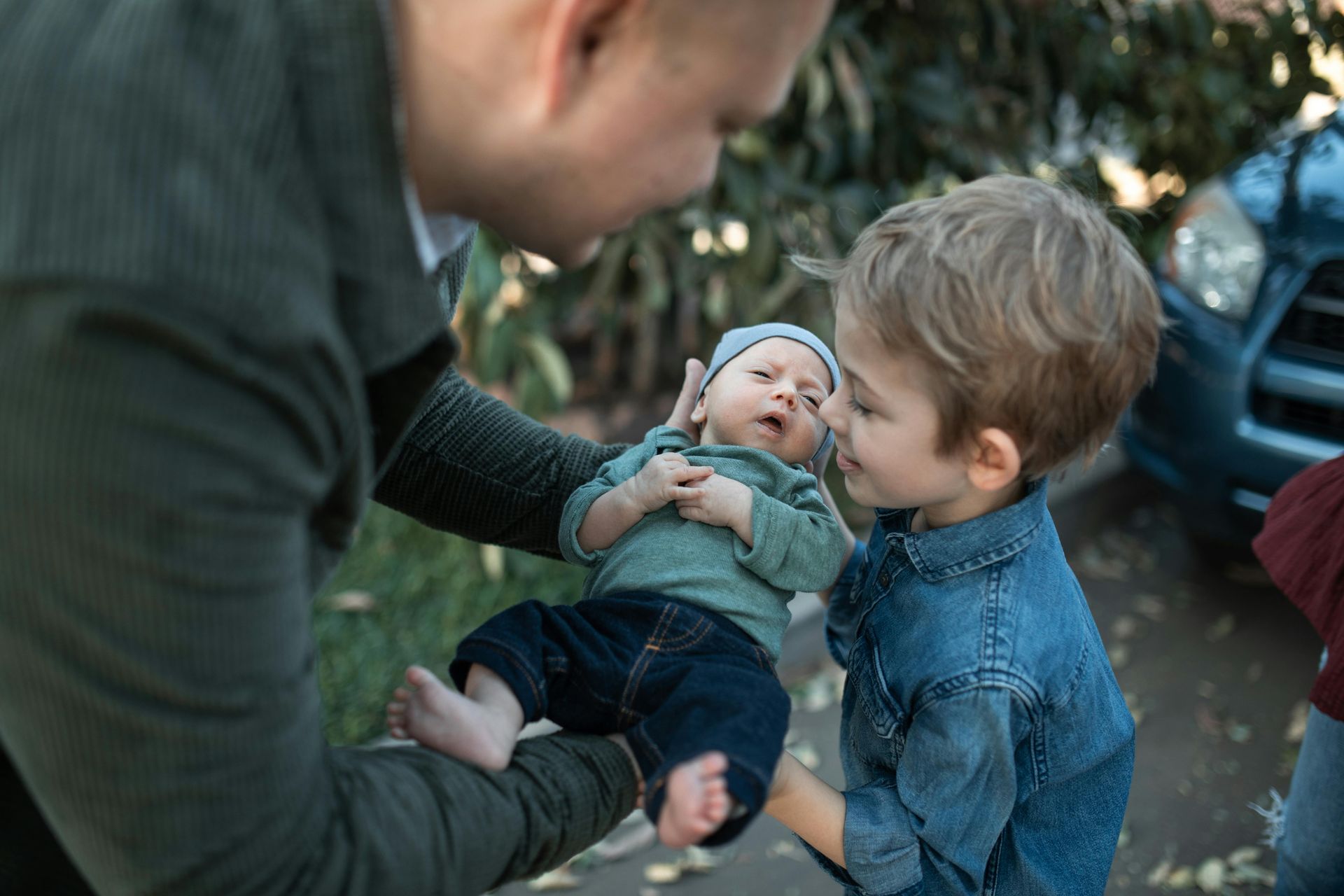
In a world that often moves too fast, one of the greatest gifts we can give our children is the ability to pause, connect, and care. While academic skills like counting and reading are important, social-emotional learning—particularly empathy, kindness, and compassion—lays the foundation for meaningful relationships and emotional well-being throughout life. At Playtime Academy , we believe that teaching kindness isn’t a side lesson—it’s a daily practice. Through intentional interactions, group play, and real-life moments, we help our little learners build the emotional muscles they need to thrive in a diverse and ever-changing world. Why Start Early? Compassion Begins in Preschool Research shows that children as young as two years old can begin to understand and express empathy. These early years are a sensitive period where children are naturally tuned in to emotions—both their own and others'. By intentionally cultivating compassionate behaviors at this stage, we can instill values that stick with them for life. Benefits of Teaching Kindness Early: Builds Self-Awareness : Children who understand their own feelings are better equipped to recognize the feelings of others. Improves Peer Relationships : Acts of kindness build trust and deepen friendships. Reduces Bullying : A compassionate classroom sets a culture of respect, reducing conflict and exclusion. Promotes Mental Health : Kindness boosts serotonin and oxytocin, improving mood and emotional regulation. How We Teach Compassion at Playtime Academy At Playtime Academy, teaching compassion is embedded into our daily routines and classroom culture—not just a “nice to have,” but a core value. Here’s how we do it: 1. Modeling from the Top Our teachers don’t just talk about kindness—they demonstrate it. Whether it’s comforting a child who’s upset or listening intently to a preschooler’s long-winded story, educators model empathy, patience, and respect in every interaction. 2. Emotion Coaching We help children label and understand their feelings: “It looks like you’re feeling frustrated because the block tower fell.” By validating their emotions, we teach children how to recognize and regulate them—and in turn, better understand others. 3. Kindness Circles Each morning, we start the day with a “Kindness Circle,” where children take turns sharing one nice thing they did or experienced. This helps them reflect on positive behavior and reinforces the idea that small acts matter. 4. The Kindness Jar When a child does something thoughtful—like sharing a toy or helping a friend—they get to add a colored stone to our “Kindness Jar.” Once the jar is full, the class celebrates with a special group activity. This collective goal fosters unity and shared responsibility. 5. Storytime With Heart We use books with strong emotional themes—like “Have You Filled a Bucket Today?” or “The Invisible Boy” —to spark conversations about empathy, generosity, and inclusion. Storytime becomes an avenue for children to relate to characters and discuss what kindness looks like in different situations. 6. Role Play and Puppetry Using puppets and dramatic play, children explore real-life scenarios like resolving conflicts, welcoming a new friend, or helping someone in need. These simulations make abstract concepts like empathy more tangible and accessible. Real Stories, Real Impact Here are a few moments we’ve seen recently that highlight the impact of our compassionate curriculum: Mia , age 4, noticed a new classmate sitting alone and invited them to play kitchen. When asked why, she said, “Everyone should have a friend to cook with.” Noah , age 3, helped his friend clean up spilled blocks and said, “It’s okay, accidents happen.” A simple statement that showed emotional maturity and support. During a class art project, a group of students spontaneously started making “thank you” cards for their teacher—just because “she helps us every day.” These seemingly small gestures are the building blocks of a compassionate community. How Parents Can Reinforce Compassion at Home Compassion isn’t just taught in the classroom—it thrives when reinforced at home. Here are a few simple strategies parents can use: Practice Empathy Talk : When watching shows or reading books, ask, “How do you think that character feels?” or “What would you do if that happened to a friend?” Create a Family Kindness Challenge : Aim for one act of kindness per day as a family. It could be helping a neighbor, calling a grandparent, or even complimenting a sibling. Praise Character, Not Just Achievement : Celebrate acts of kindness as enthusiastically as academic success. Try, “I’m proud of how you helped your friend today.” Be a Role Model : Children mirror what they see. Show kindness in your daily actions—whether it’s holding the door open or expressing gratitude. Discover how outdoor exploration sparks lifelong curiosity in children and how playtime builds emotional awareness by reading our blog posts on learning beyond the classroom and the power of emotional intelligence in early childhood . Conclusion: A Kinder World Starts With Our Littlest Learners At Playtime Academy, we’re not just shaping students—we’re shaping future citizens of the world. And in today’s fast-paced, often disconnected environment, the ability to connect with compassion is more critical than ever. By nurturing big hearts in tiny humans, we empower children to approach life with empathy, understanding, and a spirit of community. And we believe that’s the kind of education that truly lasts a lifetime.
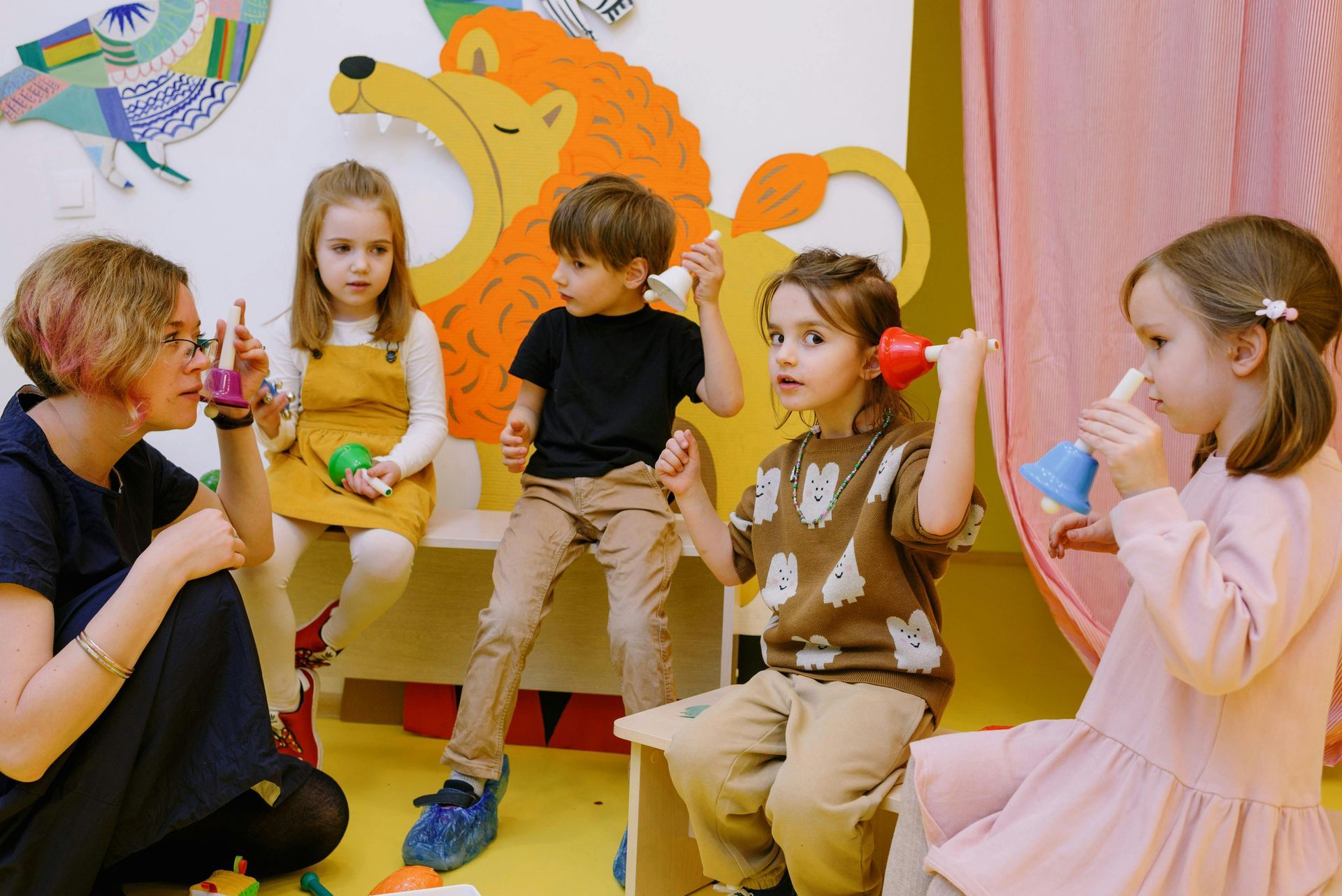
When we think of education, we often picture indoor classrooms filled with books, toys, and structured routines. But for young children, some of the most valuable learning happens beyond four walls—outdoors, where every leaf, rock, and breeze becomes an opportunity for discovery. At Playtime Academy , we embrace the great outdoors as an extension of the classroom, recognizing its vital role in nurturing children’s curiosity, creativity, and love for learning. This blog post dives into the surprising educational benefits of outdoor exploration and why it should be a core part of every child’s early development. The Natural World: A Living Laboratory Nature offers something no toy or tablet can replicate—unstructured, ever-changing, multisensory experiences. From watching ants carry food to hearing the rustle of wind through trees, outdoor play helps children build a real connection to the world around them. Why it matters: Observation and Inquiry : Children naturally ask questions outdoors—“Why is the sky blue?” “Where do birds sleep?” These questions spark a sense of inquiry that builds scientific thinking. Experimentation : Splashing in puddles or building mud castles lets children experiment with textures, weights, and forces, developing early STEM skills without even realizing it. Patterns and Predictability : Seasons, weather, plant cycles—all provide children with pattern recognition, one of the first steps toward logical thinking and mathematics. Outdoor Learning Supports All Domains of Development While outdoor play may seem like “just fun,” it supports every major area of childhood development: 1. Cognitive Development Nature-based learning enhances focus and memory. In fact, studies show that children who engage in regular outdoor play often demonstrate better attention spans and problem-solving skills. Whether it’s navigating a hiking trail or finding the best way to balance on a log, outdoor activities naturally encourage spatial reasoning, risk assessment, and planning. 2. Physical Development Running, jumping, climbing, balancing—these aren’t just play movements, they’re full-body workouts that enhance gross motor development. Even small actions, like picking flowers or turning over rocks, help fine motor coordination. At Playtime Academy, our playgrounds and nature zones are designed to safely challenge children’s bodies while building strength, endurance, and flexibility. 3. Emotional Regulation Nature has a calming effect on children. Time spent outside helps reduce anxiety, increase happiness, and improve emotional resilience. Children who have daily access to nature are more likely to bounce back from frustration and handle emotions constructively. Unstructured outdoor play lets children regulate their stress in natural, intuitive ways. 4. Social Growth Teamwork happens differently outside. Children learn to collaborate in unique ways—planning pretend camping trips, building shelters together, or setting up “nature shops” using leaves and twigs. These organic interactions teach compromise, cooperation, and leadership. Curiosity-Driven Learning: How Playtime Academy Does It Differently At Playtime Academy, our outdoor curriculum isn’t an afterthought—it’s a daily, purposeful part of our early learning approach. We carefully design our outdoor environment to serve as a dynamic, interactive classroom, with rotating materials and themed exploration zones. Some examples include: Sensory Gardens : Where children can touch, smell, and taste herbs and flowers—great for vocabulary building and sensory awareness. Loose Parts Play : With logs, shells, pinecones, and stones to encourage open-ended construction and storytelling. Mini Weather Stations : Kids learn about temperature, wind, and rain by using tools like thermometers and wind socks. Animal Observation Corners : Children use binoculars and journals to track birds, squirrels, or insects, learning patience and observational skills. We also build in time for “nature reflections” , where children talk about or draw what they saw outdoors—transforming passive experiences into meaningful learning moments. What Parents Can Do to Support Outdoor Learning Even if you don’t have access to a large backyard or nature preserve, you can still give your child the benefits of outdoor learning. Here’s how: Create a Nature Box : Fill a shoebox with rocks, sticks, leaves, and other outdoor treasures your child can explore and categorize. Ask Open-Ended Questions : After outdoor play, instead of “Did you have fun?” ask, “What did you see today that surprised you?” or “What did you make with those sticks?” Let Them Get Dirty : Mud, sand, water—it’s all part of the process. Don’t let fear of mess get in the way of learning. Observe Together : Take a walk and practice “noticing” together. Ask your child to spot three things that move, or five different textures. Balance Screen Time with Green Time : The goal isn’t to eliminate screens—it’s to create a healthy balance. Aim for at least one hour of active outdoor play each day. Explore the importance of emotional intelligence in early childhood and how playtime builds emotional awareness, as well as how early childhood education shapes future success, by reading our blog posts on the power of emotional intelligence in early childhood and creating a foundation for lifelong learning . Conclusion: Nature is a Teacher Too At Playtime Academy , we believe in nurturing whole-child development—and that means valuing outdoor learning as much as traditional academics. The curiosity sparked by a bug under a rock or the joy of running barefoot through grass teaches children resilience, independence, and wonder. These lessons aren’t just preparing them for kindergarten—they’re preparing them for life. So the next time your child is covered in dirt, clutching a handful of pebbles with a story about a squirrel they followed—know that something magical just happened. That’s learning, too.
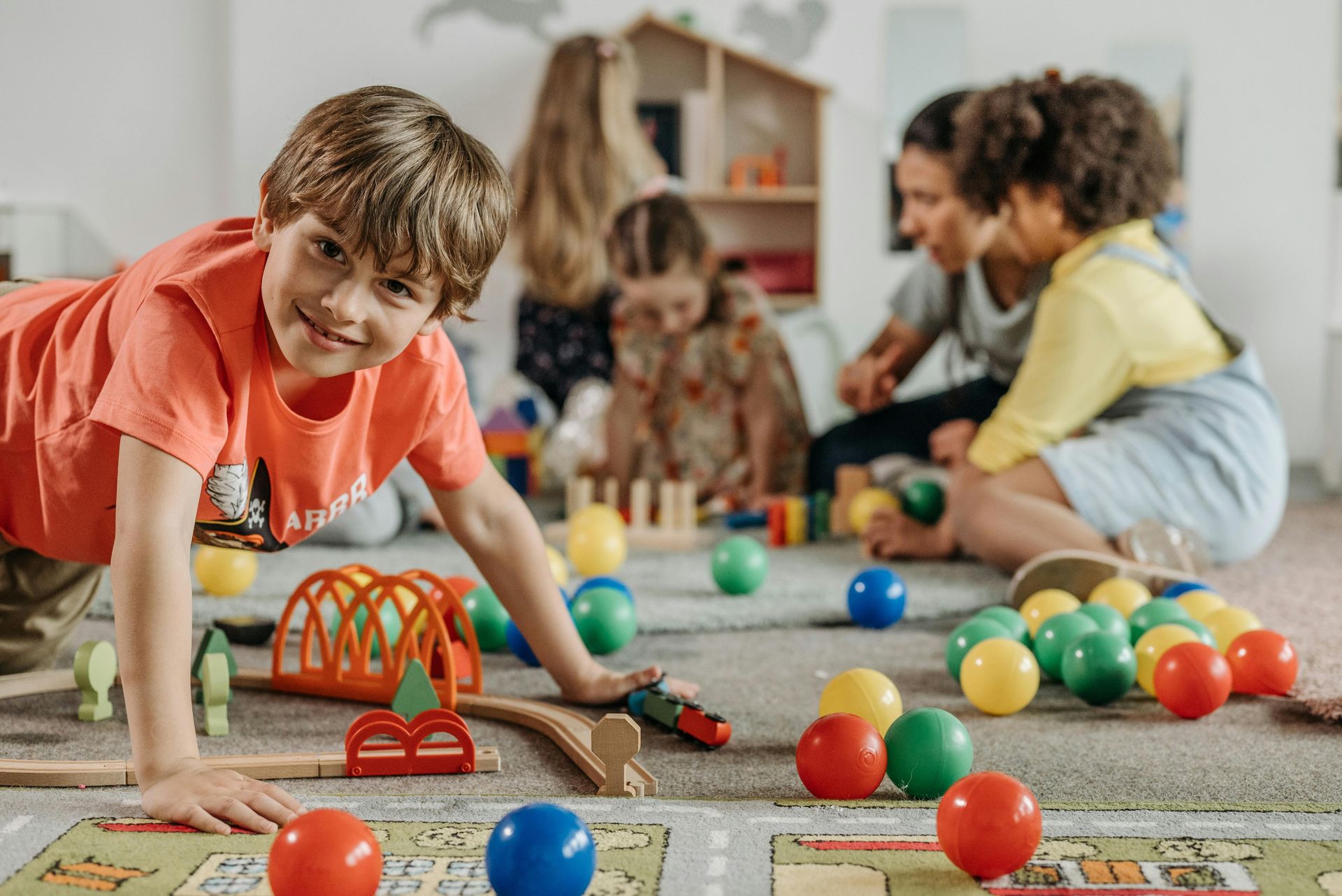
Emotional intelligence (EQ) is often considered just as important as cognitive intelligence (IQ) in determining success and well-being throughout life. For young children, developing emotional intelligence is critical, as it lays the foundation for managing feelings, building relationships, and navigating social situations. At Playtime Academy , we believe that emotional intelligence is nurtured through play and daily interactions. In this post, we’ll explore how early childhood education can foster emotional awareness and intelligence, and how playtime is a key component in this process. What is Emotional Intelligence (EQ)? Emotional intelligence refers to the ability to recognize, understand, and manage our own emotions, as well as the ability to recognize, understand, and influence the emotions of others. For young children, emotional intelligence is not just about learning to “behave” properly; it’s about developing self-awareness, empathy, and emotional regulation skills. Research has shown that emotional intelligence is linked to a wide range of positive outcomes, including academic achievement, healthier relationships, and improved mental health. The early years of a child’s life are crucial for building these skills, and playtime can be a powerful tool in promoting emotional intelligence. How Playtime Promotes Emotional Intelligence Children’s play is not just about having fun; it’s a critical opportunity for them to learn and practice emotional skills in a safe and supportive environment. Here’s how playtime helps children develop emotional intelligence: 1. Emotional Awareness through Role Play Role-playing is one of the most effective ways children learn to understand and manage emotions. By engaging in pretend play, children can experiment with different emotions and scenarios, practicing how to express feelings in healthy ways. For example, when children pretend to be doctors, teachers, or parents, they often act out real-life situations, learning to manage emotions such as frustration, excitement, or concern. This helps them develop empathy as they step into the shoes of others and learn to understand different perspectives. 2. Recognizing and Naming Emotions Before children can regulate their emotions, they need to be able to identify and name them. Playtime offers countless opportunities for children to observe and recognize emotions in themselves and others. Whether they are playing a cooperative game, sharing toys, or working through a conflict with peers, children are continually faced with opportunities to recognize emotions such as happiness, sadness, anger, and frustration. Teachers at Playtime Academy guide children through these situations, helping them label and understand the emotions they’re feeling. 3. Social Play and Building Empathy Social interactions with peers play an essential role in the development of empathy, which is a core component of emotional intelligence. During playtime, children learn how to share, cooperate, and communicate with others. They practice perspective-taking, learning how their actions affect those around them. For example, when a child shares a toy or helps a friend who is upset, they experience positive reinforcement for showing kindness and compassion. These experiences help children build strong social-emotional skills that will serve them throughout their lives. 4. Conflict Resolution and Emotional Regulation One of the most powerful aspects of play is its ability to help children navigate conflicts and learn how to regulate their emotions. During playtime, disagreements or frustrations often arise—whether it’s over a game, a toy, or a turn-taking issue. These moments present an opportunity for children to practice conflict resolution and emotional regulation skills. At Playtime Academy , teachers guide children through these challenges, offering support and helping them express their feelings in appropriate ways. Over time, children learn how to manage their emotions in a positive way and find solutions to conflicts independently. 5. Emotional Expression through Art and Music Art and music are powerful tools for emotional expression. When children engage in creative activities like drawing, painting, or playing instruments, they are able to express their feelings in ways that words may not always capture. Art and music allow children to process and communicate complex emotions, from joy to sadness to frustration. These activities also help children learn to focus, regulate their emotions, and stay calm, all of which are key components of emotional intelligence. 6. Encouraging Self-Confidence and Resilience Children with high emotional intelligence tend to have stronger self-esteem and greater resilience. Through play, children gain confidence as they try new things, take risks, and accomplish tasks. Whether it’s learning how to balance on a beam, complete a puzzle, or act out a story, play allows children to build a sense of mastery and self-worth. They also learn to persevere through challenges, developing resilience in the face of setbacks. 7. Developing Positive Relationships with Adults The role of adults in fostering emotional intelligence cannot be overstated. At Playtime Academy , our teachers and caregivers provide the guidance and emotional support that children need to build emotional intelligence. Through positive interactions, nurturing care, and empathetic listening, teachers model the behaviors that children need to develop their own emotional awareness. Children learn to trust the adults around them, and in turn, they begin to mirror these positive behaviors in their relationships with peers. Strategies for Encouraging Emotional Intelligence at Home While playtime at Playtime Academy provides ample opportunities for emotional growth, it’s also essential to continue supporting emotional intelligence at home. Here are a few strategies parents can use to help build emotional intelligence in their children: 1. Use “Feelings” Words Encourage children to name and express their emotions by using simple “feelings” words. For example, you can say, “It seems like you’re feeling frustrated right now. Can you tell me why?” This helps children develop emotional literacy and practice identifying their feelings. 2. Model Emotional Regulation Children learn best by example. Show your child how to regulate emotions by practicing calmness and self-control. If you’re feeling upset, demonstrate how to manage those emotions in a healthy way by taking deep breaths or counting to ten before reacting. 3. Create Opportunities for Social Play Arrange playdates or group activities that allow children to interact with others. These interactions are a great way for children to develop social skills, practice sharing, and navigate emotions like jealousy or disappointment. 4. Praise Efforts, Not Just Outcomes When children successfully navigate an emotional challenge, praise their efforts and strategies rather than focusing solely on the outcome. For example, “I’m proud of you for taking a deep breath when you were frustrated,” reinforces the value of emotional regulation. Learn how early childhood education lays the foundation for lifelong learning and how fostering emotional intelligence through play can shape children's future success by exploring our blog posts on creating a foundation for lifelong learning and fostering emotional intelligence in children through play . Conclusion Emotional intelligence is an essential skill that lays the foundation for healthy relationships, effective communication, and personal well-being. Through everyday play activities, children can develop the emotional awareness, empathy, and self-regulation skills that are crucial for success in both school and life. At Playtime Academy , we are dedicated to providing an environment where children can grow emotionally and socially, building a strong foundation for emotional intelligence that will benefit them for years to come.
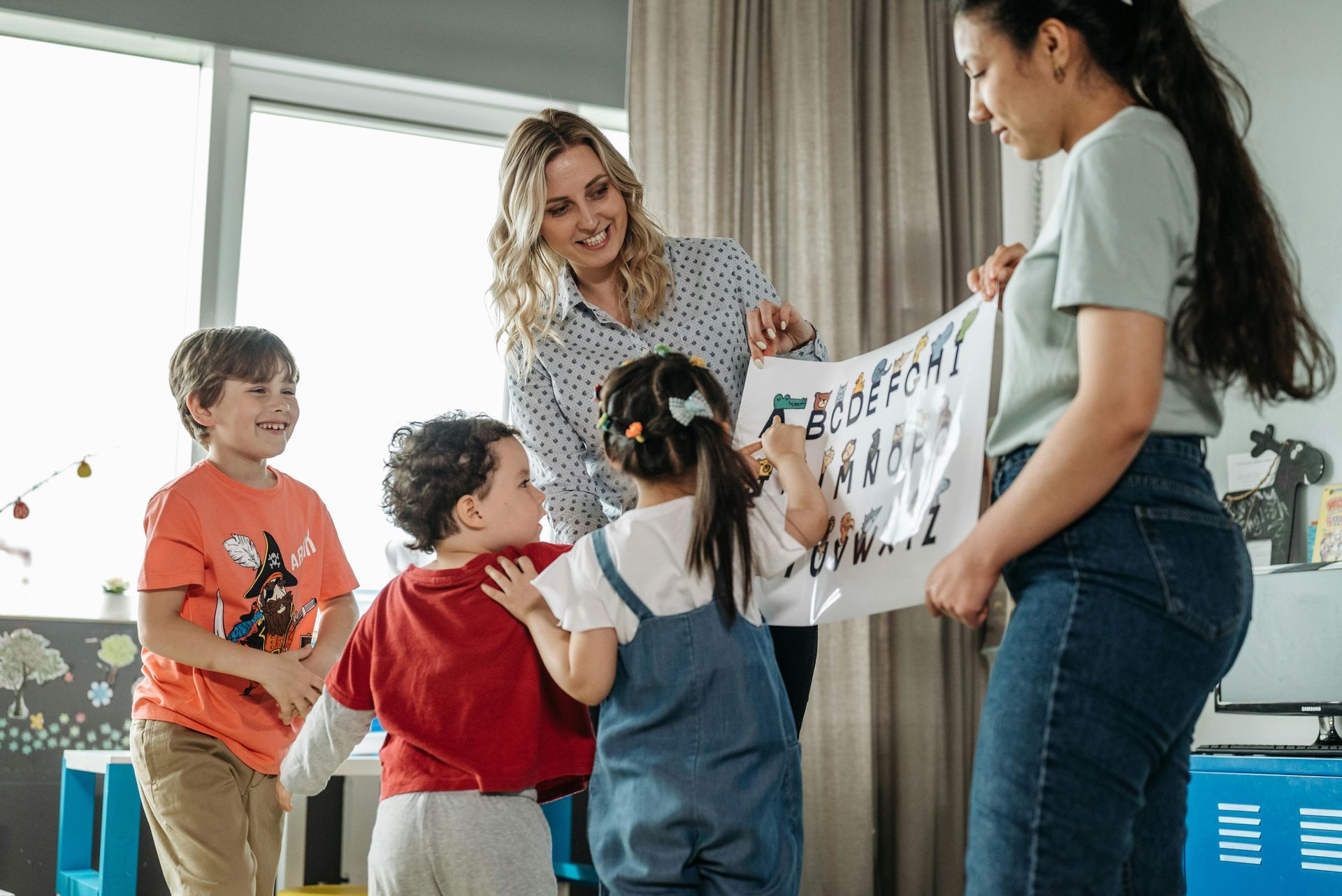
The early years of a child’s life are crucial for their cognitive, emotional, and social development. As educators and caregivers, it is our responsibility to build a solid foundation for lifelong learning, helping children develop skills that will serve them throughout their lives. At Playtime Academy , we focus on creating an environment that encourages curiosity, critical thinking, and resilience from the very beginning. In this blog post, we’ll explore how early childhood education plays a pivotal role in shaping a child’s future success and the strategies we use to set them on the path toward lifelong learning. The Importance of Early Childhood Education Research consistently shows that the first five years of a child’s life are vital for brain development. This period is when children’s brains form the foundational connections that shape their ability to think, learn, and interact with others. The experiences children have during these early years set the stage for their academic and social success later in life. At Playtime Academy , we believe that education is not just about academics. It’s about fostering a love for learning, building curiosity, and encouraging a child’s natural drive to explore the world around them. By providing a supportive and engaging learning environment, we help children develop a growth mindset that stays with them as they continue their education and later life experiences. Building the Building Blocks of Learning Early childhood education is not just about teaching children what they need to know—it’s about preparing them for the process of learning itself. Here’s how we do that: 1. Encouraging Curiosity and Exploration Curiosity is the cornerstone of lifelong learning. Young children are naturally curious about their surroundings and have an innate desire to explore. At Playtime Academy , we nurture this curiosity by providing opportunities for children to engage with new experiences, whether it’s exploring the outdoors, participating in sensory play, or experimenting with different materials. This hands-on approach allows children to learn through trial and error, which builds critical thinking skills. 2. Promoting Cognitive Development through Play Play is often described as “the work of children,” and for good reason. It’s through play that children practice problem-solving, critical thinking, and creativity. Whether they’re building with blocks, sorting shapes, or engaging in imaginative play, children are developing their cognitive abilities in ways that are both fun and educational. We also incorporate early literacy and numeracy skills into our play-based learning, helping children build a strong academic foundation in a natural and engaging way. 3. Building Emotional Resilience and Social Skills Lifelong learning is not only about academics but also about emotional resilience and social intelligence. At Playtime Academy , we provide an environment where children learn to manage their emotions, interact with peers, and develop empathy. Social play helps children build cooperation skills, practice conflict resolution, and understand different perspectives. These skills are essential for success in school and in life. By fostering emotional resilience, we help children develop the confidence to face challenges and approach new situations with a positive attitude. 4. Encouraging Independence and Self-Confidence We believe that children learn best when they feel confident and capable. That’s why we encourage independent thinking and problem-solving in the classroom. By allowing children to make choices, solve problems, and take ownership of their learning, we help them develop a sense of autonomy. This builds self-confidence and prepares them for future challenges by teaching them that they can be proactive and find solutions on their own. 5. Creating a Love for Learning Perhaps the most important aspect of early childhood education is fostering a love for learning that lasts a lifetime. When children feel safe, engaged, and excited about learning, they are more likely to develop a passion for acquiring new knowledge throughout their lives. By making learning fun, interactive, and relevant to their interests, we instill in children the belief that learning is a joy, not a chore. This mindset is crucial for future academic success and personal growth. The Role of Play-Based Learning in Early Childhood Education At Playtime Academy , we use a play-based learning approach that integrates academic concepts with creative, hands-on activities. Play-based learning encourages children to experiment, explore, and develop problem-solving skills in a relaxed and enjoyable environment. Here are some of the ways we implement this approach: 1. Sensory Play for Cognitive and Physical Growth Sensory play is an essential part of early childhood education. Activities such as playing with sand, water, or playdough help children engage their senses while building fine motor skills and cognitive abilities. By exploring different textures, colors, and shapes, children learn about the world around them and develop foundational skills in language, math, and science. 2. Interactive Learning Stations Our classrooms are designed with interactive learning stations where children can explore various themes, such as building, art, nature, and science. Each station is filled with materials that encourage hands-on discovery. These stations allow children to practice problem-solving, collaboration, and creativity in a structured yet flexible setting. 3. Storytelling and Literacy Development We believe that stories are a powerful way to develop language skills and stimulate the imagination. Through storytelling, children expand their vocabulary, improve their listening skills, and begin to understand narrative structures. We also encourage children to create their own stories, whether through pictures, play, or verbal expression, to further strengthen their literacy skills. 4. Movement and Physical Activities Physical activity plays a significant role in early childhood development. At Playtime Academy , we incorporate movement into our daily routines, whether it’s through dance, outdoor games, or yoga. Physical activity not only promotes healthy growth but also enhances cognitive function, coordination, and emotional well-being. Preparing for the Future: Lifelong Learning Mindset At Playtime Academy , our ultimate goal is to prepare children for a future filled with endless possibilities. By focusing on cognitive, emotional, social, and physical development, we create well-rounded individuals who are equipped with the skills needed for academic success and personal fulfillment. We understand that the foundation laid in these early years is crucial for the child’s future, and we work diligently to ensure that every child in our care has the opportunity to thrive. Discover how fostering emotional intelligence through play and building resilience can prepare children for life's challenges by reading our blog posts on fostering emotional intelligence in children through play and how playtime builds resilience . Conclusion Early childhood education is the key to unlocking a child’s potential. At Playtime Academy , we are committed to fostering a love of learning, developing essential life skills, and creating an environment that encourages children to explore, question, and grow. By laying the foundation for lifelong learning, we help children develop the confidence, resilience, and curiosity needed to succeed in school and beyond.
